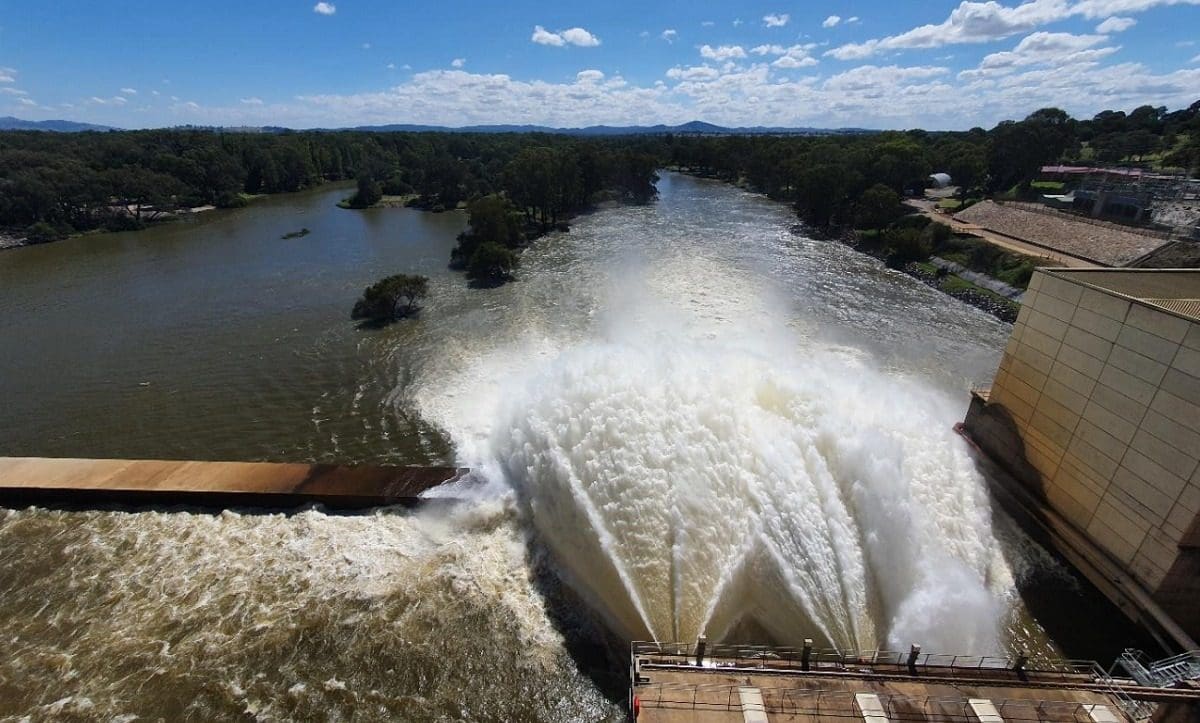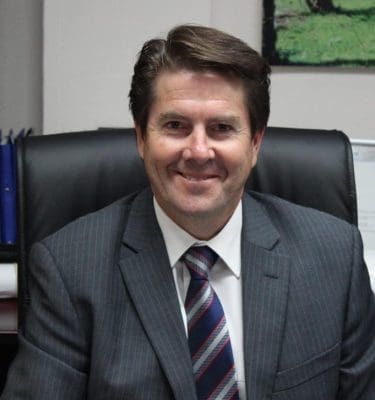
The Hume Dam helps to regulate the flow of the River Murray. Photo: Murray-Darling Basin Authority
THE FEDERAL Government has announced the framework for voluntary water buybacks from catchments in Queensland and New South Wales to make up short-falls in the Murray-Darling Basin Plan.
The water purchase is for the remaining 49.2GL of the Bridging the Gap target.
Bridging the Gap is the largest pool of water to be recovered under the MDBP at a total of 2075GL.
NSW and Victorian governments have come out against water buy-backs, arguing the policy has too great an impact on regional farming communities and works to disadvantage them in the long-term.
NSW Minister for Water Kevin Anderson said water should be recovered via funding infrastructure rather than buybacks.
“We have seen first-hand the impact that Commonwealth buyback programs have had before and will not stand by and watch this happen again,” Mr Anderson said in a statement.

NSW Minister for Water Kevin Anderson
“Not only does it permanently reduce the amount of water available for regional communities in the long term, it increases the price of water for other users, and reduces agricultural productivity in regional areas.
“NSW will strongly argue that any further water recovery must be prioritised through investment in water infrastructure rather than buybacks.”
In an opinion piece, Victorian Water Minister Harriet Shing argued that her state knows “buybacks do not work”.
“They take water out of the consumptive pool, pushing up prices, and create greater risk to the water security of local businesses,” Ms Shing said.
The National Irrigators’ Council has called the initiative “a tax on food and fibre”.
“This announcement was made without consultation and is a slap in the face to farmers and communities who were assured they would be listened to and have their views considered,” NIC CEO Isaac Jeffrey said.
“When water is taken away from farmers, it forces the price of water up.
“Buybacks mean less production to feed and clothe our growing population into the future, which will force up the price of food, and mean we need to import more.”
Comprising 46GL of surface water and 3.2GL of groundwater, the short-fall will be recovered across seven catchments in the MDB.
The Condamine-Balonne catchment in Queensland was earmarked to supply 14GL of surface water and all 3.2GL of groundwater.
The balance will come from surface water purchased in NSW catchments, including: NSW Murray, 10GL; Namoi, 9.5GL; NSW Border Rivers, 5.1GL; Barwon-Darling, 1.6GL; and Lachlan, 0.9GL.
Cost of buybacks unknown
The buyback process will be conducted via a tender process, and therefore no estimated cost of the scheme has been publicly released.
However, the Environment and Communications Legislation Committee last week speculated about the approximate value of water recovered from the MDB.
Water Reform Division head Rachel Connell told the committee that there “is a range of water entitlement products across multiple catchments and water resources in the basin”.
“In terms of the current operating range, it is approximately $6000 to $9000 per megalitre,” Ms Connell said.
She said the entitlements on the higher end of the spectrum would be for high-security water in catchments like the Murrumbidgee.
Using this estimate, the current cost of the water buybacks could total $295.2M-442.8M.
Tenders open soon
The Australian Government will also continue to work with the Australian Capital Territory Government to identify, plan and deliver cost-effective efficiency projects to bridge the remaining gap of 4.9GL of surface water in this catchment.
The Strategic Water Purchasing Framework outlines the principles that will guide how the water will be purchased.
An open tender will begin on March 23 through the AusTender website.
Water licence holders who are interested in selling their water entitlements to the Australian Government are encouraged to consult with their legal and financial advisors to start gathering relevant information to support a tender application.
The Australian Government remains interested in receiving feasible, non-purchase-based projects that can be delivered in collaboration with the community and state governments by 30 June 2024.



HAVE YOUR SAY